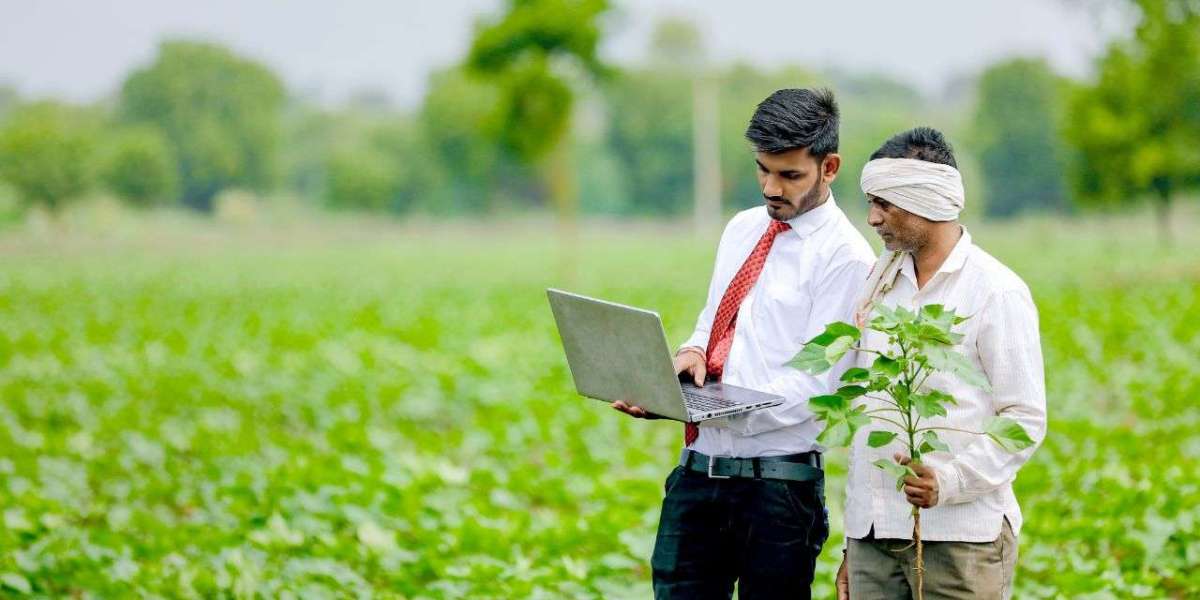The Indian bio agriculture market size reached a value of about INR 58,633.34 Million in 2024. The market is further expected to grow at a CAGR of 4.20% in the forecast period of 2025-2034 to reach a value of about INR 88,475.26 Million by 2034. This steady growth reflects the increasing awareness among farmers about sustainable agricultural practices, the rising demand for chemical-free food, and the strong policy support from the Indian government to promote eco-friendly farming techniques.
Introduction to Bio Agriculture
Bio agriculture refers to agricultural practices that emphasize the use of natural resources and biological methods for crop cultivation and soil management. Unlike conventional farming, which heavily relies on synthetic chemicals and fertilizers, bio agriculture employs biofertilizers, biopesticides, organic manure, and microbial inoculants to enhance soil fertility and protect crops from pests in an eco-friendly way.
The concept is not new to India, as traditional farming methods have always involved natural inputs. However, in recent decades, the dominance of chemical-based farming has led to soil degradation, health hazards, and environmental pollution. Today, as awareness about these harmful effects grows, farmers and consumers alike are shifting toward biological solutions.
Key Drivers of the Indian Bio Agriculture Market
The bio agriculture market in India is expanding due to several factors. Below are the primary growth drivers:
1. Rising Demand for Organic and Chemical-Free Food
Consumers are increasingly aware of the health benefits of consuming food that is free from harmful pesticides and chemicals. With lifestyle-related diseases on the rise, there is a growing preference for organic food products. This consumer demand is driving farmers to adopt bio agriculture practices.
2. Government Initiatives and Subsidies
The Government of India has launched various schemes such as Paramparagat Krishi Vikas Yojana (PKVY) and National Mission on Sustainable Agriculture (NMSA) to promote organic and bio farming. These initiatives provide subsidies, training, and financial assistance to farmers for adopting sustainable farming practices.
3. Environmental Concerns
Excessive use of chemical fertilizers and pesticides has degraded soil quality, polluted water sources, and harmed biodiversity. Bio agriculture offers a sustainable alternative that restores soil fertility, reduces greenhouse gas emissions, and ensures long-term environmental health.
4. Growing Export Opportunities
India is one of the largest exporters of organic products. The rising global demand for organic food creates lucrative opportunities for Indian farmers to enter international markets, provided they comply with bio-agriculture standards.
Segmentation of the Indian Bio Agriculture Market
The bio agriculture market in India can be segmented based on product type, application, and region:
1. By Product Type
- Biofertilizers: These enhance soil fertility by fixing atmospheric nitrogen, solubilizing phosphorus, and stimulating plant growth. Common biofertilizers include Rhizobium, Azotobacter, and phosphate-solubilizing bacteria.
- Biopesticides: These are derived from natural materials such as bacteria, fungi, and plants. They control pests while being safe for humans, animals, and the environment.
- Organic Manure and Compost: These improve soil structure and nutrient content.
2. By Application
- Cereals and Grains
- Fruits and Vegetables
- Pulses and Oilseeds
Among these, fruits and vegetables have the highest adoption of bio agriculture due to consumer preference for pesticide-free produce.
3. By Region
States like Maharashtra, Karnataka, Uttar Pradesh, Madhya Pradesh, and Rajasthan are major contributors to the bio agriculture market, owing to large agricultural land and increasing adoption of organic farming practices.
Trends Shaping the Future of Bio Agriculture in India
The Indian bio agriculture sector is witnessing several emerging trends:
1. Digital and Precision Farming
Farmers are increasingly adopting digital tools and precision farming techniques to optimize biofertilizer and biopesticide usage. Mobile apps and IoT-based solutions are helping farmers monitor soil health and nutrient levels accurately.
2. Rise of Startups and Agri-Tech Companies
Many Indian startups are entering the bio agriculture space, offering innovative solutions such as microbial-based products, organic inputs, and soil health improvement services. Companies like BioAgri, Anand Agro Care, and IPL Biologicals are playing a crucial role in expanding the market.
3. Growing Awareness Campaigns
Non-governmental organizations (NGOs) and agricultural institutions are conducting awareness programs to educate farmers about the benefits of bio agriculture. This is helping to bridge the knowledge gap and encourage adoption.
4. Export-Oriented Production
With global markets demanding certified organic produce, Indian farmers are increasingly focusing on bio agriculture to tap into export markets, especially in Europe and North America.
Challenges in the Bio Agriculture Market
Despite its promising growth, the Indian bio agriculture market faces several challenges:
- Limited Awareness and Knowledge: Many farmers are still unaware of bio agricultural methods or lack the technical know-how to implement them effectively.
- High Initial Cost: Although bio agriculture reduces input costs over time, the initial investment for organic certification and soil treatment can be high.
- Supply Chain Gaps: Ensuring timely availability of biofertilizers and biopesticides remains a challenge in rural areas.
- Quality and Standardization Issues: Lack of uniform quality standards for bio-products can affect farmer confidence and market credibility.
Future Outlook
The future of the Indian bio agriculture market looks promising. Increasing consumer awareness, government support, and technological advancements will continue to drive adoption. If farmers receive adequate training, financial assistance, and infrastructure support, bio agriculture can become a mainstream practice, ensuring sustainable food production for future generations.



